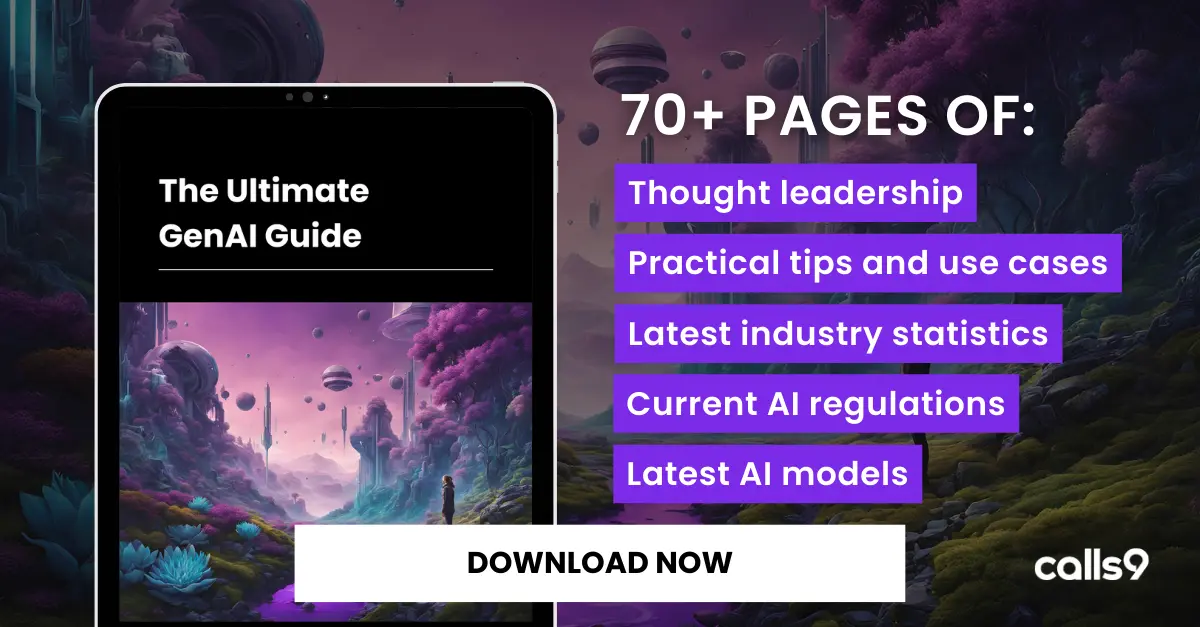Generative AI has emerged as a transformative force, offering the potential to revolutionise entire industries by streamlining workflows and automating tedious tasks. McKinsey reports that generative AI could add an astonishing $2.6 trillion to $4.4 trillion annually across various sectors, including marketing and R&D.
However, while AI is making waves, there’s a growing concern that we may be limiting its true potential. As Evan Armstrong puts it, we're falling into the trap of “buttonisation,” where generative AI is crammed into existing workflows like a shiny new feature rather than a fundamental shift. Adding AI to old software brings incremental improvements but falls short of delivering huge productivity leaps. To truly harness AI's power, we need to rethink our workflows from the ground up, allowing GenAI to do more than just speed up tasks—it should transform and automate them entirely.
This blog will explore how generative AI can streamline and optimize business processes, with real-world examples and case studies. We’ll also provide practical steps for successful implementation, ensuring that your AI journey isn't just about superficial upgrades, but a complete workflow overhaul.
How can generative AI streamline business processes?
At its core, generative AI applications are designed to create, innovate, and automate processes that previously required human input. By leveraging advanced algorithms and generative AI models, you can now automate a range of tasks, from content creation to decision-making, helping you streamline and optimise business processes.
Here are some of the main benefits and generative AI use cases to inspire you:
1. Automating routine tasks with generative AI agents
Generative AI agents excel at automating tedious and repetitive tasks, such as data entry, report generation, and email responses. By streamlining these processes, generative AI applications significantly lighten the load on employees, reducing human errors and boosting both accuracy and efficiency.
A prime example of this is Klarna, a global payments provider that introduced a GenAI agent to enhance customer service. The results have been nothing short of transformative. The generative AI agent now handles inquiries about refunds, returns, payments, and cancellations across 35 languages. It responds within two minutes, down from an average of 11 minutes—a massive leap in efficiency. Today, this generative AI application manages 75% of Klarna's customer service interactions—over 2.3 million conversations—and achieves customer satisfaction scores similar to human agents.
2. Creative Content Generation
We've all experienced the power of generative AI platforms—whether it's creating content, images, or videos with just a few clicks. Some businesses take it a step further, using these tools on an enterprise level, while others develop their own custom generative AI platforms. This approach allows them to efficiently and cost-effectively produce high-quality content at scale, giving them a serious competitive edge.
The German agency MJZ created a generative AI editorial assistant named Mini. This tool helped MJZ's editorial team generate article ideas, simplify complex texts, and adapt stories for their audience. As a result, the time required to plan, write, and publish articles was reduced by 75%, enabling the team to produce content more efficiently while maintaining creative control.

3. GenAI-powered decision-making
Generative AI platforms, powered by advanced AI models, excel at processing massive datasets with remarkable speed, empowering businesses to extract valuable insights and drive smarter decision-making. Whether it's enhancing inventory management, refining demand forecasting, or optimising customer service, generative AI models are rapidly proving indispensable tools for innovation and efficiency.
A great example comes from Siemens, which integrated a generative AI feature into its Senseye Predictive Maintenance solution. This upgrade made the AI more conversational and user-friendly, enhancing its ability to make predictive recommendations for machinery maintenance. The system now leverages data from similar machines, optimising maintenance strategies, reducing downtime, and conserving resources.
4. Personalisation at scale with generative AI
Several generative AI platforms enable real-time analysis of customer data, empowering businesses to personalise marketing campaigns, product recommendations, and even customer service interactions. This scalable level of personalisation drives higher customer satisfaction and fosters stronger brand loyalty.
A great generative AI use case comes from Oreo, whose marketing strategy emphasises "empathy at scale." Using generative AI, they crafted personalised ad campaigns tailored to different demographics and times of day. Their "Oreo Eye on the Clock" campaign significantly increased click-through rates compared to standard messaging. This enabled them to connect with consumers on a personal level and drive substantial growth for the brand.
Practical tips for implementing generative AI in your business
As you consider integrating generative AI into your business processes, here are a few practical steps to help you get started and maximise the benefits:
- Identify key areas for automation: Start by pinpointing the repetitive and time-consuming tasks that could be automated using generative AI. Whether it's data entry, content creation, or customer support, focus on areas that most benefit from increased efficiency.
- Choose the right generative AI platforms and tools: There are countless generative AI platforms available, so selecting the right one for your specific needs is crucial. Evaluate your business requirements and select tools that offer security, scalability, ease of use, and integration with your existing systems.
- Pilot small before scaling: Before fully committing to generative AI across your entire business, consider running pilot programmes in a few departments. This will allow you to assess its impact on productivity and make adjustments as needed.
- Focus on employee upskilling: AI isn't just about replacing manual tasks—it's also about enabling your team to do their best work. Invest in training programmes to help employees understand how to collaborate effectively with AI tools, boosting their creative and strategic capabilities.
- Prioritise ethics and transparency: As generative AI evolves, so too do concerns around ethical use, bias, and transparency. Establish clear guidelines and ethical standards for AI implementation. Regularly audit your AI systems to ensure they align with your company's values and remain fair and accurate.
- Monitor and adjust: AI systems require continuous monitoring to provide reliable outputs. Set up feedback loops where human experts review AI-generated content and decisions to avoid issues like inaccuracies or biases.
Follow these steps to start leveraging the full potential of generative AI - streamline operations, boost innovation, and maintain a competitive edge—all while fostering a responsible, human-centred approach to GenAI adoption.
.webp)
Embracing the future of operations with generative AI
Generative AI is no longer a futuristic concept—it’s reshaping industries worldwide, automating mundane tasks and enhancing decision-making. The benefits are real and vast, but successful AI integration goes beyond just adopting the latest tools. To truly unlock AI’s transformative power, businesses must rethink how they operate, avoiding the trap of simply adding AI as a “button” to existing workflows. Instead, strategic integration that aligns with your organisation’s goals, culture, and ethical standards is essential.
The key to success lies in balance: blending the efficiency of AI with the irreplaceable value of human expertise. Businesses that invest in AI-driven automation while simultaneously upskilling their workforce will not only stay competitive but thrive in this new era of innovation.
But remember, adopting generative AI is a journey—not a destination. As with any powerful technology, it requires ongoing assessment, ethical consideration, and a commitment to transparency. By fostering a culture of continuous learning and collaboration between humans and AI, your business can unlock unprecedented opportunities for growth and transformation.
As an team that has seen the transformative power of generative AI firsthand, we encourage you to approach AI adoption with both ambition and responsibility. By doing so, you'll streamline your operations and, drive innovation and create a future where AI amplifies human potential—rather than replacing it.
The future is here, and those who harness the potential of generative AI wisely will lead the way.
Getting Started with End-to-End AI Transformation
Partner with Calls9, a leading generative AI agency and your all-in-one partner, from strategy to secure and responsible GenAI implementation and workforce up-skilling.
Join our AI Fast Lane programme to get access to a team of AI experts who will guide you through every step of the way:
- Audit your existing AI capabilities
- Create your Generative AI strategy
- Identify Generative AI use cases
- Build and deploy Generative AI solutions
- Create a generative AI-enabled workforce
- Testing and continuous improvement
Learn more and book a free AI Consultation
* This articles' cover image is generated by AI




